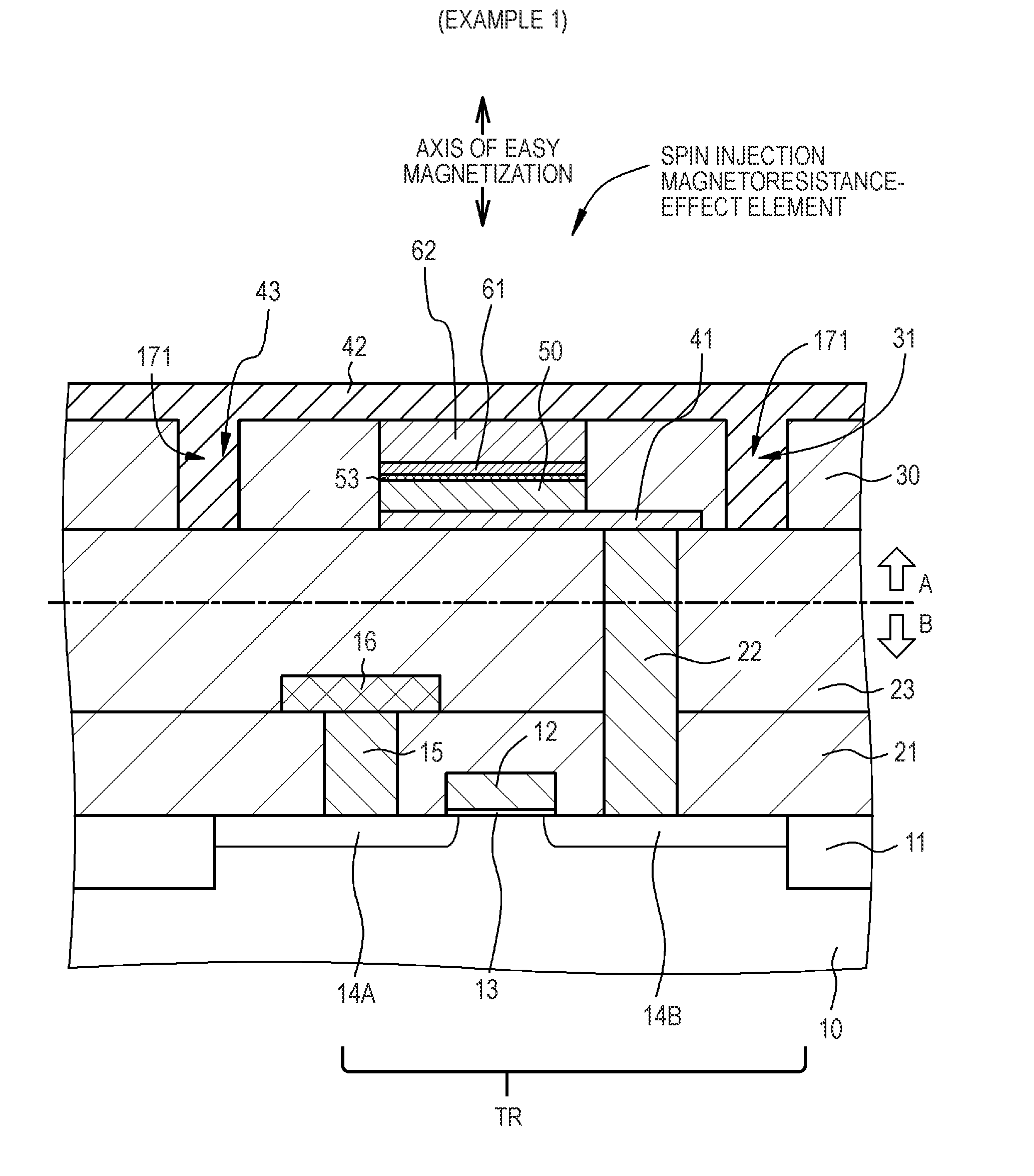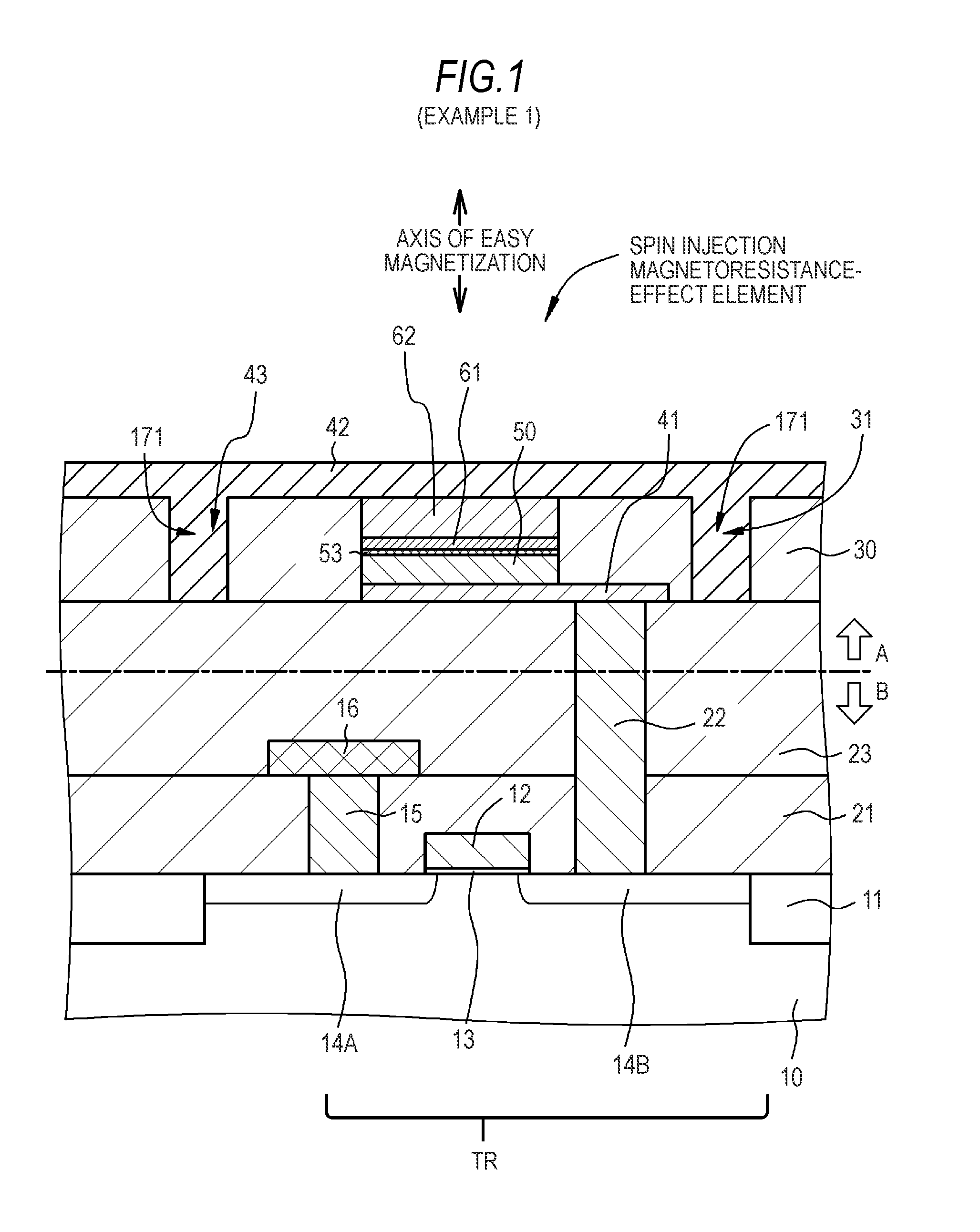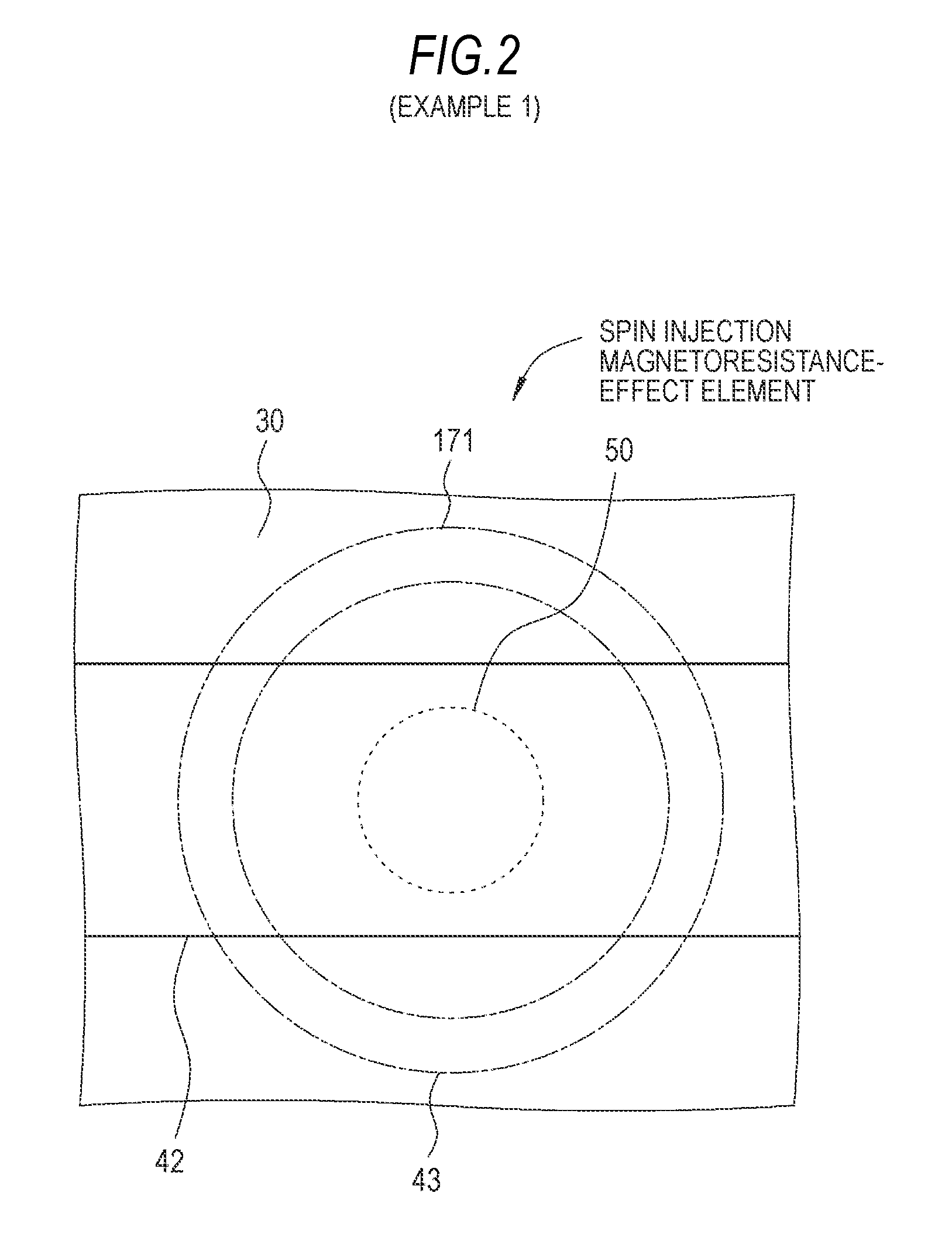Nonvolatile magnetic memory device
a magnetic memory and nonvolatile technology, applied in galvano-magnetic devices, magnetic bodies, instruments, etc., can solve the problems of difficult microfabrication of ferroelectric layers, slow writing speed, and disadvantages of flash memory, and achieve the effect of increasing increasing the perpendicular magnetic anisotropy and the magnetic resistive of the recording layer, and easy magnetization
- Summary
- Abstract
- Description
- Claims
- Application Information
AI Technical Summary
Benefits of technology
Problems solved by technology
Method used
Image
Examples
first embodiment
(nonvolatile magnetic memory device of the invention)
[0038]3. Example 2 (modification of example 1)
[0039]4. Example 3 (modification of example 2)
[0040]5. Example 4 (nonvolatile magnetic memory device according to second embodiment of the invention)
[0041]6. Example 5 (modification of example 4)
[0042]7. Example 6 (modification of example 4 and example 5)
[0043]8. Example 7 (another modification of example 4)
[0044]9. Example 8 (modification of example 5)
[0045]10. Example 9 (modification of example 6)
[0046]11. Example 10 (yet another modification of example 4)
[0047]12. Example 11 (still another modification of example 4 and others)
[General Explanation of Nonvolatile Magnetic Memory Device According to First Embodiment and Second Embodiment of the Invention]
[0048]A nonvolatile magnetic memory device according to the second embodiment of the invention may have a configuration in which a high Young's modulus region having a Young's modulus of a higher value than that of a Young's modulus o...
example 1
[0079]Example 1 relates to a nonvolatile magnetic memory device according to the first embodiment of the invention. FIG. 1 is a schematic partial sectional view of the nonvolatile magnetic memory device of example 1, and FIG. 2 schematically shows an arrangement condition of a laminated structure, a first wiring line, a second wiring line, and a high Young's modulus region.
[0080]The nonvolatile magnetic memory device of example 1 includes a magnetoresistance-effect element including:
[0081](A) a laminated structure 50 having a recording layer 53 in which an axis of easy magnetization is oriented in a perpendicular direction;
[0082](B) a first wiring line 41 electrically connected to a lower part of the laminated structure 50; and
[0083](C) a second wiring line 42 electrically connected to an upper part of the laminated structure 50. In example 1 to example 11, the magnetoresistance-effect element includes a spin injection magnetoresistance-effect element using magnetization reversal by...
example 2
[0130]Example 2 is a modification of example 1. FIG. 3 is a schematic partial sectional view of a nonvolatile magnetic memory device of example 2. In example 2, a high Young's modulus region 271 having a Young's modulus of a higher value than that of the Young's modulus of the material forming the recording layer 53 is also provided close to the side surface of the laminated structure 50. However, unlike in example 1, in example 2, an insulator film 32 is formed on the side surface of the laminated structure 50, and the high Young's modulus region 271 is formed to have a sidewall shape via the insulator film 32 on the side surface of the laminated structure 50.
[0131]In example 2, the high Young's modulus region 271 includes tungsten nitride (WN). On the other hand, the second wiring line 42 includes titanium (Ti). Values of the Young's modulus EH of the high Young's modulus region 271 etc. are shown in table 2.
[0132]Regarding the nonvolatile magnetic memory device of example 2, subs...
PUM
 Login to View More
Login to View More Abstract
Description
Claims
Application Information
 Login to View More
Login to View More - R&D
- Intellectual Property
- Life Sciences
- Materials
- Tech Scout
- Unparalleled Data Quality
- Higher Quality Content
- 60% Fewer Hallucinations
Browse by: Latest US Patents, China's latest patents, Technical Efficacy Thesaurus, Application Domain, Technology Topic, Popular Technical Reports.
© 2025 PatSnap. All rights reserved.Legal|Privacy policy|Modern Slavery Act Transparency Statement|Sitemap|About US| Contact US: help@patsnap.com



